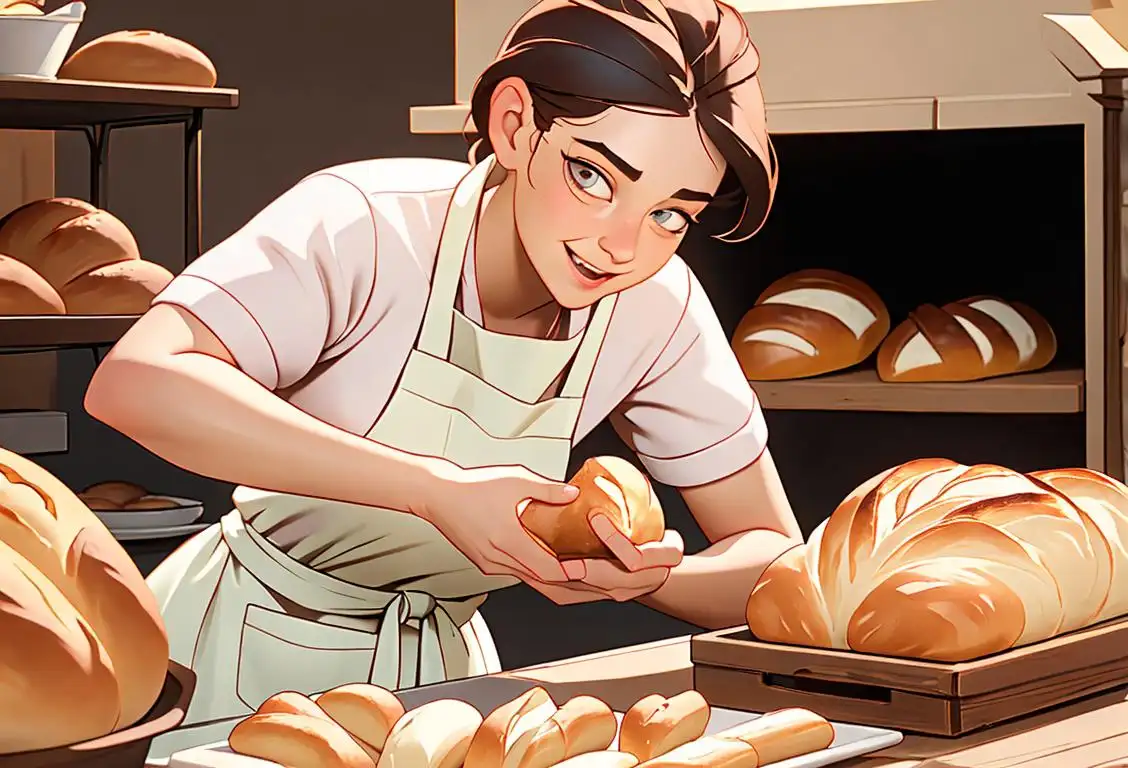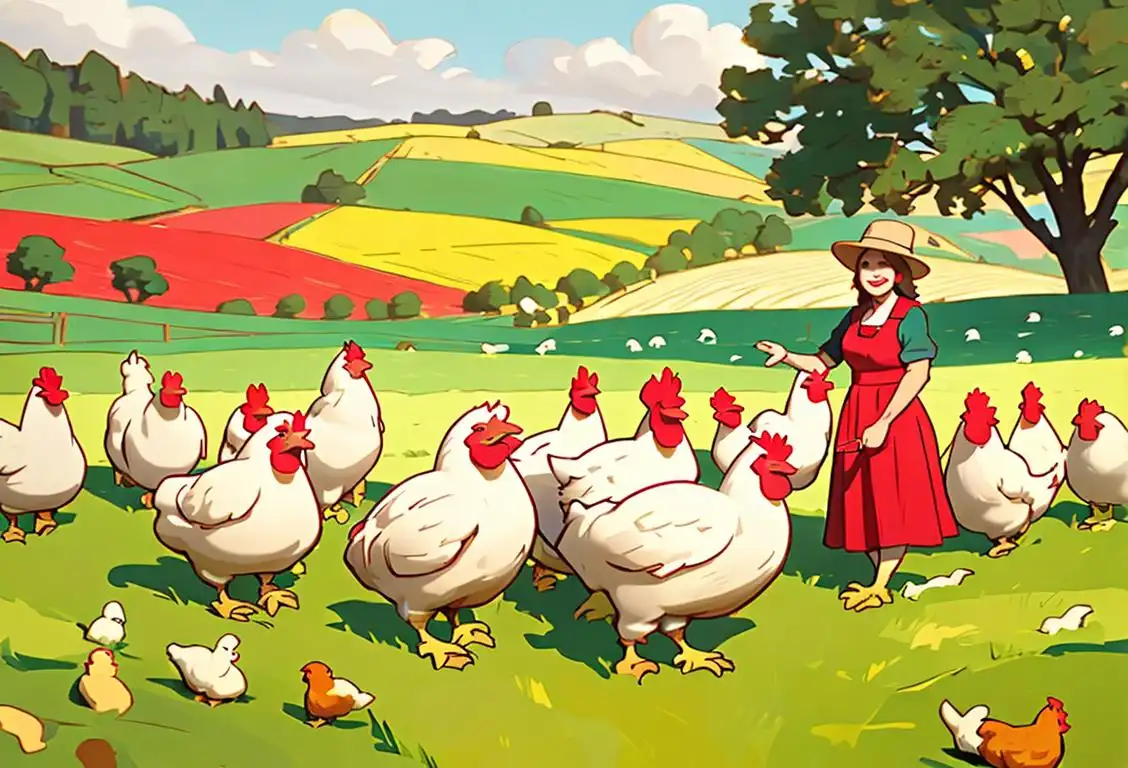National Bread Day

Get ready to knead that dough and butter up your taste buds because National Bread Day is here! This carb-tastic celebration will have you craving all things yeasty and delicious. Whether you're a sourdough aficionado or a soft, fluffy bread enthusiast, this day is dedicated to honoring the miracle that is bread. So, grab a loaf, let's dive into the history, fun facts, and delightful traditions that make this day so special!
When is Bread Day?
It's national bread day on the 16th October.
A Brief Rise in History
Bread has been a staple food for centuries, dating back to ancient times. From the simplicity of a single grain milled into flour, mixed with water, and baked over an open fire, bread has evolved into an endless array of flavors, shapes, and varieties. Each culture has its own unique bread recipe, like the baguette from France or the naan from India, but they all share the common goal of satisfying our carb cravings.
In recent years, bread has taken the online world by storm. Blogs dedicated to artisanal baking have sprouted like wild yeast, and social media feeds are filled with mouthwatering photos of crusty loaves and delicate pastries. #BreadGoals has become a thing, where bakers show off their dough-licious creations to bread enthusiasts around the globe.
The Perfect Slice of Fun
Did you know that the largest bread ever baked was over 100 feet long? That's right, it could have circled around a football field! Talk about a colossal carb creation. It took a team of skilled bakers, tons of flour, and a whole lot of yeast to pull off this epic feat.
History behind the term 'Bread'
8000 BCE
The Origins of Bread
Bread has been a staple food for thousands of years, dating back to the Neolithic era. The first evidence of bread production can be traced back to around 8000 BCE in ancient Egypt and Mesopotamia. During this time, humans transitioned from a hunter-gatherer lifestyle to settled agriculture, cultivating grains such as wheat and barley. The discovery of grinding stones and archaeological sites containing charred grains suggests that early humans began grinding and cooking grains, leading to the creation of bread dough.
4000 BCE
Leavened Bread
Around 4000 BCE, the Egyptians discovered the process of fermentation, leading to the invention of leavened bread. Fermentation occurs when wild yeasts and bacteria in the environment interact with the dough, causing it to rise. The Egyptians would save a portion of dough from each batch to use as a starter for the next, allowing them to consistently produce leavened bread. This method spread to other ancient civilizations, such as the Babylonians and Greeks, who further refined the technique.
3rd Century BCE
Roman Influence and Bakers' Guilds
During the 3rd century BCE, the Roman Empire greatly influenced the development of breadmaking. The Romans improved milling techniques, perfected the use of sourdough, and introduced the first commercial bakeries. They also established bakers' guilds, which were professional associations that ensured the quality of bread and regulated pricing. These guilds laid the foundation for the modern bakery industry, influencing bread production throughout Europe.
9th Century CE
The Introduction of White Bread
In the 9th century CE, white bread became a symbol of social status and wealth. During this time, the process of milling grains improved, allowing for the removal of bran and germ, resulting in a whiter flour. As a result, white bread became highly prized and reserved for the upper classes, while darker, coarser bread was consumed by the lower classes. This distinction persisted for many centuries.
19th Century
Industrialization and Sliced Bread
The 19th century witnessed significant advancements in technology and industrialization, which transformed the bread industry. In 1928, Otto Frederick Rohwedder invented the first automatic bread-slicing machine, revolutionizing the way bread was packaged and consumed. Sliced bread became more convenient and accessible, leading to increased consumption and standardization of loaf sizes. Today, sliced bread remains a popular choice for sandwiches and toast.
21st Century
Artisan Bread and Bread Culture Revival
In recent years, there has been a resurgence of interest in traditional breadmaking methods and artisanal bread. Artisan bakers focus on using high-quality ingredients, natural leavening agents, and long fermentation processes to create unique and flavorful bread. This movement reflects a growing appreciation for the craftsmanship and cultural significance of bread, emphasizing the importance of preserving traditional techniques in the face of mass-produced alternatives.
Did you know?
The largest bread ever baked was over 100 feet long!Tagged
nsfw food funFirst identified
17th November 2015Most mentioned on
16th October 2019Total mentions
614Other days
Chocolate Mousse Day
Something On A Stick Day
Children Day
Awareness Day
Frappe Day
Taco And Vodka Day
Happiness Day
Opposite Day
One Day
Poultry Day









